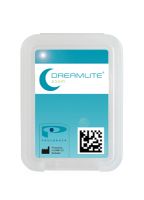Night lenses are specially tailored to your eyes. These lenses go to work for you at night when you are sleeping. The shape of the night lens slightly flattens the front of the cornea, thereby correcting your eye defect. This gives you sharp vision during the day, without glasses or lenses. This is also called orthokeratology or ortho-k. Think of it as a brace for your eyes. During the day, your eyes get complete rest. This is ideal for active people or those with dry eyes.

Night lenses correct your eyes while you sleep
In at night, out during the day. How simple can it be? Sleep with night lenses and see razor sharp during the day without glasses, reading glasses or lenses. This is also called ortho-k. Experience the ultimate freedom!
Start today if you...
- Don’t want to wear glasses, reading glasses or lenses during the day
- Want freedom in daily activities
- Suffer from hay fever
- Have sensitive or dry eyes and want to give your eyes a rest during the day
- Are looking for a safe and reversible alternative to laser treatment
Allow cookies to see video content
Our contact lens solutions
Frequently Asked Questions
How do night lenses work?
For whom are DreamLite® night lenses suitable?
DreamLite® night lenses are suitable for people with myopia, or nearsightedness. This means you have a minus strength. DreamLite has a range of -0.75 D to -5.00 D. In addition, a cylinder can be corrected to as much as -2.50. Do you use a reading addition? Then DreamLite® Zoom is the solution with an addition of up to +1.50 . Sharp vision all day at all distances. Tip: Always ask for the original DreamLite® night lenses, recognizable by the DreamLite® logo!What should I look for in lenses for my child?
Children can wear lenses as young as 8 years old on average. (1) Before a child can start wearing lenses, the eye care specialist explains what it means to wear the lenses and the responsibilities involved for the child, such as in the area of hygiene. (1) Charm, J & Cho, P, 2013, High Myopia-Partial Reduction Ortho-k: A 2 year randomized study, Optometry and Vision Science, Vol 90, No 6 P530-539.




